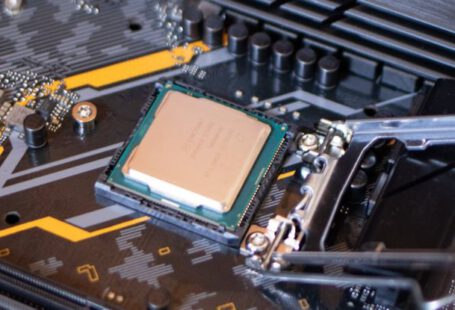Over the past decade, the evolution of Central Processing Units (CPUs) has been nothing short of remarkable. From increased performance to enhanced energy efficiency, the advancements in CPU technology have paved the way for a new era of computing. Let’s delve into how CPUs have transformed over the last ten years.
### The Rise of Multi-Core Processors
One of the most significant changes in CPU technology over the past decade has been the widespread adoption of multi-core processors. In the early 2010s, dual-core processors were common in consumer-grade computers. However, as demand for more processing power grew, manufacturers began introducing quad-core, hexa-core, and even octa-core processors.
### Improved Performance and Efficiency
With each new generation of CPUs, we have witnessed a substantial increase in performance and efficiency. Manufacturers have focused on shrinking the size of transistors, improving clock speeds, and optimizing power consumption. These advancements have led to faster processing speeds, smoother multitasking capabilities, and reduced energy consumption.
### Integration of Graphics Processing Units (GPUs)
In recent years, there has been a trend towards integrating Graphics Processing Units (GPUs) into CPUs. This integration has led to significant improvements in graphics performance, making it possible for users to enjoy gaming, video editing, and other graphics-intensive tasks without the need for a separate GPU.
### The Shift to 7nm and 5nm Process Technology
Another key development in CPU technology has been the shift to smaller process nodes. In the early 2010s, CPUs were primarily manufactured using 22nm or 14nm process technology. However, in recent years, we have seen the introduction of 7nm and even 5nm process nodes, allowing for more transistors to be packed into a smaller area, resulting in improved performance and efficiency.
### The Advent of AI and Machine Learning
The integration of AI and machine learning capabilities into CPUs has been a game-changer in the world of computing. Modern CPUs are equipped with dedicated AI accelerators that enable tasks such as speech recognition, image processing, and natural language processing to be performed more efficiently than ever before.
### Enhanced Security Features
As cyber threats continue to evolve, CPU manufacturers have placed a greater emphasis on security features. Modern CPUs come equipped with hardware-based security technologies such as Intel’s Software Guard Extensions (SGX) and AMD’s Secure Encrypted Virtualization (SEV), providing an extra layer of protection against malware and cyber attacks.
### The Future of CPU Technology
Looking ahead, the future of CPU technology holds even more exciting possibilities. We can expect to see further advancements in AI integration, increased focus on energy efficiency, and the continued evolution of multi-core processors. Quantum computing also looms on the horizon, promising to revolutionize the way we approach complex computational tasks.
### In Summary
In conclusion, the evolution of CPUs over the last decade has been nothing short of extraordinary. From the rise of multi-core processors to the integration of GPUs and AI capabilities, CPUs have become more powerful, efficient, and versatile than ever before. As we look towards the future, it is clear that CPU technology will continue to drive innovation and reshape the landscape of computing.





